| |
|
Miner's
Memorial Float
Planned For Parade |
|
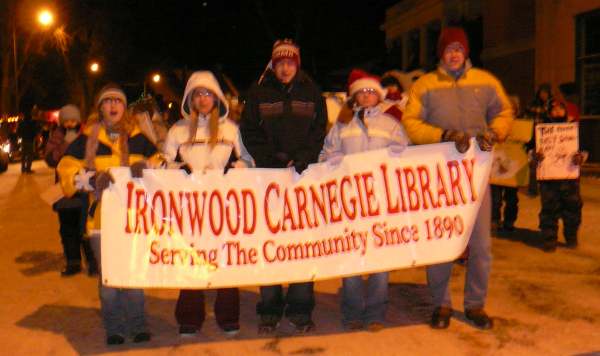 |
Ironwood - November 8, 2009
The Friends of Miners Memorial Heritage Park
has decided to have a float in the Jack
Frost Parade! The float is entitled
“Remember.” Friends of the MMHP will be
dressed as miners walking and riding
on the float.
Volunteers are needed;Here are a few ways
people could help out:
Walk in the parade dressed as a miner!
Everyone is welcome. People who have worked
mines are more than welcome!
If you know someone who was a miner, ask him
if he would be interested in being in the
float.
The main costume for miners is overalls.
More mining clothes would be great.
Still needed, mining attire, mining
gear, or other props.
Mining hardhats with lamps (the most needed
item). Picks.
A spotlight to shine on the head frame or up
from below it.
A work bee will take place Tuesday to
construct the head-frame as well as paint
and design signs.
Everyone is welcome, handymen are
appreciated.
This Tuesday, November 10th at 5:30 pm.
Location: Heated work garage of David
Suutala: 6309 W. US HWY 2
Turn left 2.5 miles west of the Hwy 51/Hwy 2
overpass. It is 1 mile before the Kimball
Inn . A sign will direct you to the
driveway.
Another work bee will be announced in the
coming weeks. |
| |
Wolves,
Moose and Biodiversity:
an Unexpected Connection |
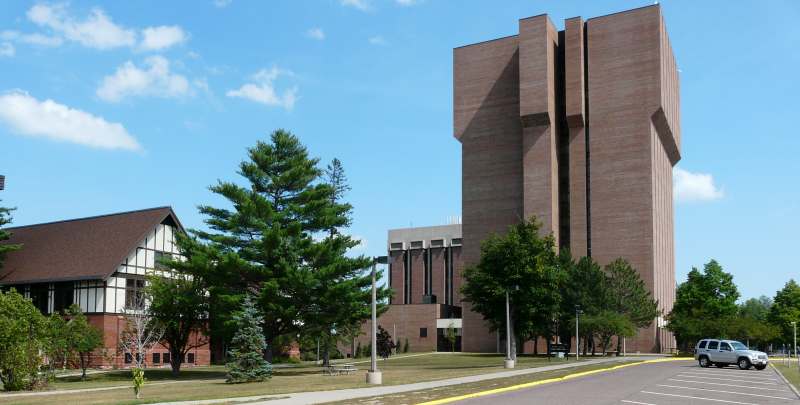 |
| by Jennifer
Donovan, director, public relations Moose
eat plants; wolves kill moose. What
difference does this classic predator-prey
interaction make to biodiversity?
A large and unexpected one, say three
Tech wildlife biologists. Joseph Bump, Rolf
Peterson and John Vucetich (SFRES) report in
the November 2009 issue of the journal
Ecology that the carcasses of moose killed
by wolves at Isle Royale National Park
enrich the soil in "hot spots" of forest
fertility around the kills, causing rapid
microbial and fungal growth that provide
increased nutrients for plants in the area.
"This study demonstrates an unforeseen
link between the hunting behavior of a top
predator--the wolf--and biochemical hot
spots on the landscape," said Bump, first
author of the research paper. "It's
important because it illuminates another
contribution large predators make to the
ecosystem they live in and illustrates what
can be protected or lost when predators are
preserved or exterminated."
Bump and his colleagues studied a 50-year
record of more than 3,600 moose carcasses at
Isle Royale. They measured the nitrogen,
phosphorus and potassium levels in the soil
at paired sites of wolf-killed moose
carcasses and controls. They also analyzed
the microbes and fungi in the soil and the
leaf tissue of large-leaf aster, a common
native plant eaten by moose in eastern and
central North America.
They found that soils at carcass sites
had 100 to 600 percent more inorganic
nitrogen, phosphorus and potassium than soil
from surrounding control sites. Carcass
sites also had an average of 38 percent more
bacterial and fungal fatty acids, evidence
of increased growth of bacteria and fungi.
The nitrogen levels in plants growing on
the carcass sites was from 25 to 47 percent
higher than the levels at the control sites.
Since large herbivores, like moose, are
attracted to nitrogen-rich plants, the
carcass sites become foraging sites, further
supplementing soil nutrients from the urine
and feces of the animals eating there.
"I was initially skeptical that it would
be possible to detect something as diffuse
in the forest floor as nutrients from dead
animals," said Peterson, who has been
studying the wolves and moose of Isle Royale
for decades. "It was gratifying to see
Joseph succeed in following animal-derived
nutrients back into plants to enrich them in
protein, ready to be eaten again."
Even moose killed in winter and mostly
consumed produce substantial nutrient hot
spots, Bump reports. "At the landscape
scale, long-term carcass deposition patterns
could influence forest dynamics by shifting
competitive relationships among tree
seedlings through changes in the nutrient
concentrations in their growth environment,"
he writes.
Bump has observed similar effects on the
soil and plant life at elk carcass sites in
Yellowstone National Park, another place
where wolves are predators and large
herbivores are their prey. And he adds that
on the arctic tundra, where soil nutrients
are limited, others have found that the
impact of a musk ox carcass on surrounding
vegetation is dramatic even after 10 years.
"Predation and nutrient cycling are two
of the most important of all ecological
processes, but they seem just about
completely unrelated to one another,"
observes Vucetich, who conducts an annual
winter study of the wolves and moose of Isle
Royale. "Bump has led us to understand how
these two seemingly disparate
processes--predation and nutrient
cycling--are in fact connected and connected
in a most interesting way."
The strong and unexpected connections
between wolves, moose and the
biogeochemistry of their ecosystem are
important to policy makers involved in
predator management and to a public
increasingly concerned about conservation,
Bump suggests.
The research was supported by the
National Science Foundation and the US
Environmental Protection Agency.
|
| |
|
Timberrrrr! |
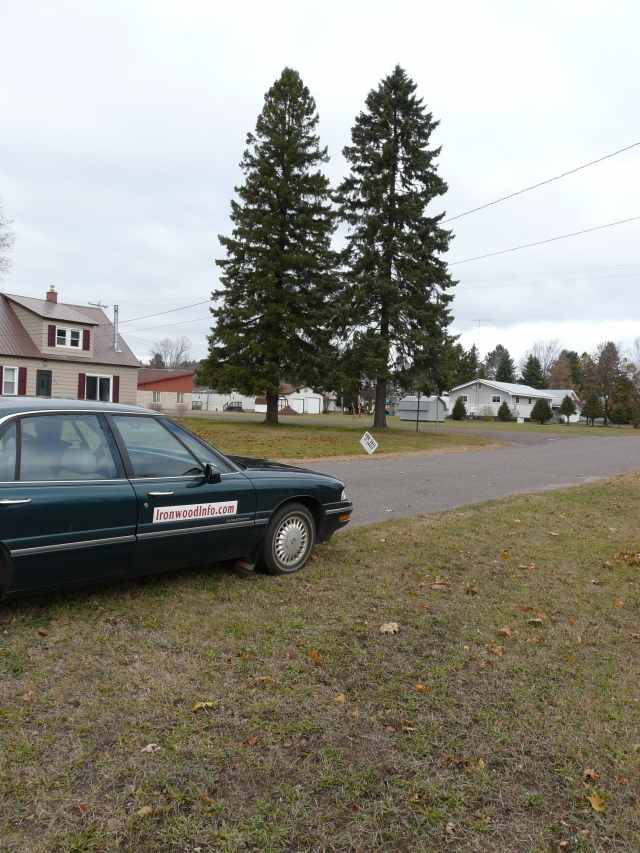 |
| Bergland - November 5, 2009 photo taken Tuesday of the Bergland
home belonging to Josh and Amanda Lopac. The tree sitting closest to the
house would be harvested on Wednesday (yesterday) to become the seventh
tree in row harvested from the U.P. to serve as our state's official
Christmas tree. |
| Below, Denny Olson who would head up the operation sitting with Ann-Jousma-Miller,
Governor Granholm's Director of her U.P. Office. Over 500 people were on
hand for the harvesting ceremony. |
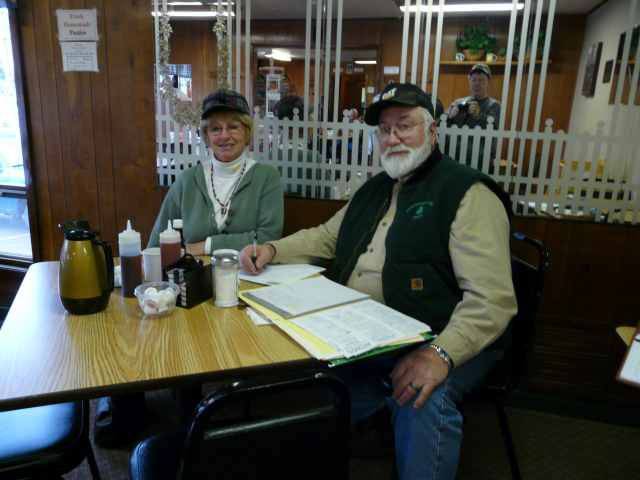 |
|
Read More... |
| |
| Memorial
Tree Grove to Grace East Side of MTU Campus |
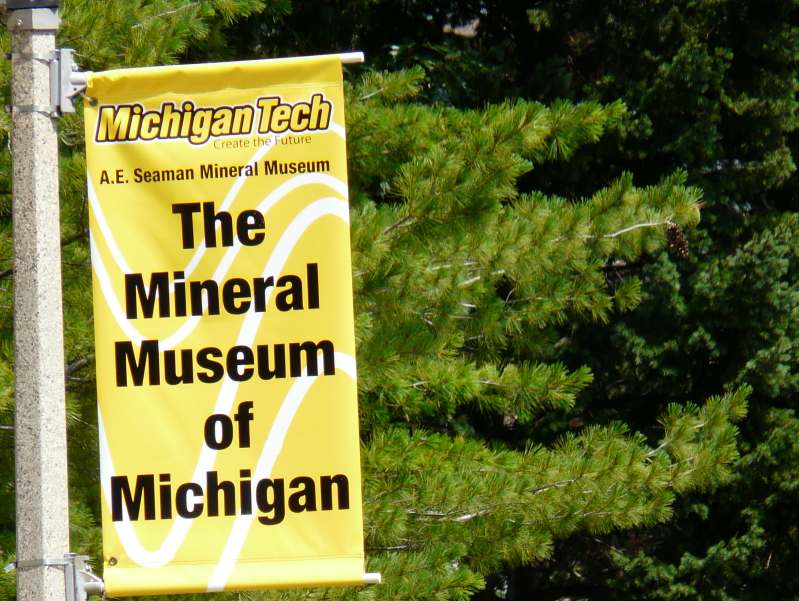 |
| November 7, 2009 by
Jennifer Donovan, director of public
relations
Dan Lorenzetti is not a man who likes to
wait for results. When he heard that
Michigan Tech was planning to add
approximately 150 trees to the well-traveled
eastern approach to its campus along US-41
over the next 15 years, his response was: "I
want to see that approach to campus
beautified immediately."
So he came up with a win-win plan to
achieve that goal: Invite the public to
sponsor a tree in a Memorial Grove, in honor
or memory of someone they admire. That way,
a public entrance to Michigan Tech gets its
trees, and the community has an opportunity
to become part of a living memorial to
friends and family who made the Copper
Country what it is today.
An individual, family or organization can
sponsor a tree for $600, a tax-deductible
charitable contribution. The name of the
person whom it honors or memorializes will
be displayed on a plaque that maps the
grove.
The trees will be planted between the
Rozsa Center for the Performing Arts, the
Walker Arts and Humanities Center and US-41.
"This is a wonderful opportunity for
ordinary people in the community to become
part of a living memorial and at the same
time to support Michigan Tech," said
Lorenzetti, a community volunteer and active
supporter of the University. "Everyday
people can’t contribute a million dollars to
build a building, but they can help beautify
the campus and their community by planting a
memorial tree."
Lorenzetti, owner of Superior Block in
Houghton, grew up in Hancock near Quincy
Hill. After a career as a high school
principal in Wisconsin, he and his family
returned to the Copper Country to take over
his family's business.
"We thank Dan Lorenzetti for this
creative proposal that will further beautify
and green-up the Michigan Tech campus, while
also providing a creative memorial legacy
opportunity for local citizens and alumni,"
said President Glenn Mroz. "We deeply
appreciate Dan's ongoing commitment to
Michigan Tech and the University community."
Lorenzetti is thrilled about the idea of
the Memorial Grove. "I'll be able to bring
my grandchildren to see the tree we planted
in memory of my grandfather," he explained.
Shea McGrew, vice president for
advancement, is equally enthusiastic. "Dan
Lorenzetti approached us about this, and we
agreed it is a wonderful idea," McGrew said.
"Those participating in the project can
remember a loved one or friend in a
tangible, lasting way. And, they invest in
the beautification of the east end of campus
and an enhanced first impression for
visitors arriving in Houghton from that
direction."
Memorial groves have been established at
a few other universities around the country,
including the University of North
Carolina-Chapel Hill and Indiana
University-Purdue University, Indianapolis.
People who want to sponsor a tree should
contact Paula Nutini, director of annual
giving, at 487-3609 or at pjnutini@mtu.edu ,
or Dan Lorenzetti at 482-2731 or at dan@superiorblock.com
.
|
| |
|
Forging A New
Partnership |
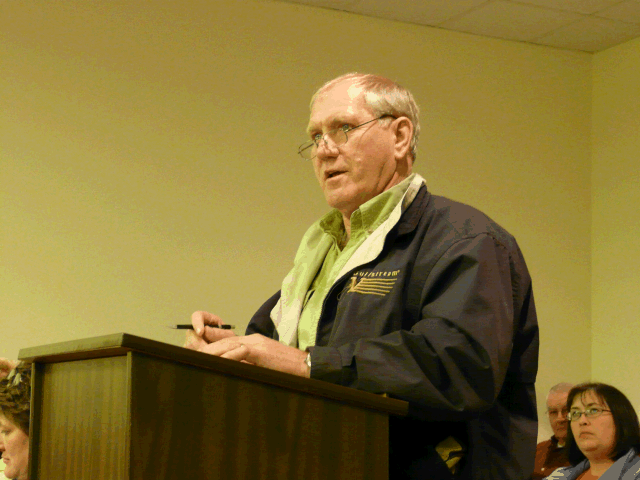 |
The Ontonagon County Board Held a special
meeting Wednesday evening. The purpose of
the meeting was to search out ways to
improve the economic future of the county.
The meeting was limited to 1 1/2 hours and
as you would expect, it used every minute of
its 90 minute limitation.
The goal of the meeting was to ultimately
form a countywide partnership between all
government agencies, townships and
businesses that will bring about a stable
economy for the Ontonagon County. Actually,
the meeting was quite interesting, although
nothing novel. The only exception being Norm
Peska, a do it your self success story. None
of daddy’s money or daddy’s goodwill here.
Last night Pestka made several offers to
the 53 people crowded into the courtroom.
First, during the open remarks period, he
summarized some of his successes. He offered
to provide counseling to prospective
entrepreneurs. He also suggested that he
might provide or find financing for upstart
businesses. Mr. Pestka alluded to how the
banks fail their communities in this regard.
Later in the meeting, when the discussion
centered around finding an Economic
Development Director, Pestka offered to
contribute the first $20,000 for the
undertaking. The discussion as it pertained
to the EDC director was interesting. The
last time that we attended the Ontonagon EDC
meeting, they had yet to even write a job
description for that position yet alone fill
it. Most interesting was the fact that they
were considering allowing Skip Schultz to
write the job description. This might be
acceptable if it weren’t for the fact that
Schultz had already applied for the job.
Imagine if every job applicant were
permitted to write their own job description
for every job that they applied for.
HMMMMMMM!
At last evening’s meeting someone
suggested that the search for an EDC
Director include local citizens. Wonder
where that one’s headed?
Last night the meeting was presided over
by Frank Wardynski, Extension Agent for
Ontonagon County.
In preparation for the evening’s
discussion, Wardynski prepared a list of
interesting but hypothetical questions.
If 45% want to go east and 45% want
to go west ; where do we go?
If 50% want to go north and 5% want
to go south, and the 5% is heard and
passionate; where do we go?
We found this second question very
interesting. We found it to be even more
interesting by the conclusion of the
meeting. If the number had been 10% in lieu
of 5% it would have really been interesting.
During the meeting approximately 10% of the
group had spoken and were committed to their
personal cause (if not passionate) and by
the end of the meeting, the 10% were having
their way with things. It certainly links
back to the squeaky wheel theory.
During the meeting, while discussing the
direction the partnership would go, Viki
James repeatedly pointed to a survey that
the chamber had already invested in.
Ironically, there were actually people who
suggested that a survey was unnecessary.
HMMMMM! We found several people speaking
about things they certainly were ill
equipped to speak about. But, everyone
should be heard. How else do you separate
the wheat from the chaff.
As is usual in these meetings there are
differences in opinions and as Martha would
say "That’s a Good Thing". Many people come
to the table to secure a spot for their own
pet projects and interests. Hopefully, the
members of the "action committee"
established last night will listen to each
other as well as educate each other.
The destination is worthy, the road is
long, and the commitment needs to be up to
the task.
|
| |
|
|
